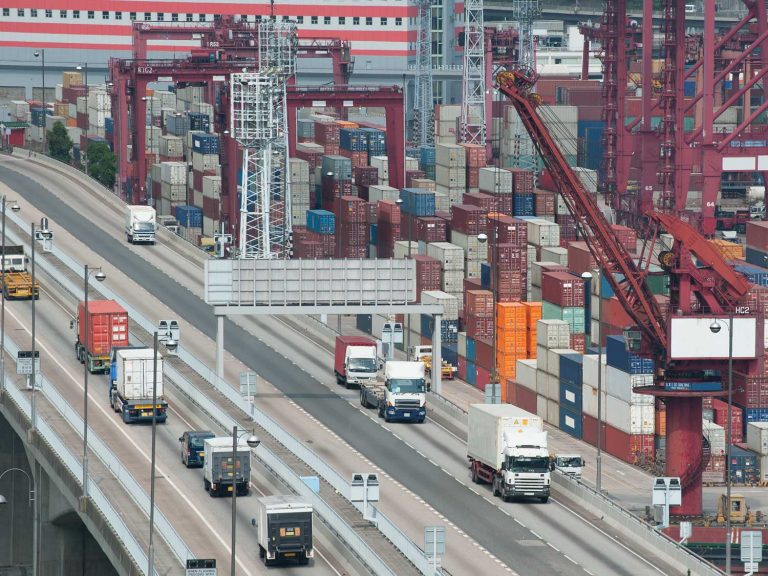
Date:
Ex-Asia Ocean Spot Rates Surge as Carriers Withdraw Capacity
Asia–Europe ocean freight markets have tightened significantly through Q4, with carriers implementing repeated rate increases and withdrawing substantial capacity from key services.
Since early October, freight-all-kinds (FAK) levels have been raised at roughly fortnightly intervals, pushing North Europe and Mediterranean spot prices sharply higher and signalling a firmer market as tender season begins.
Carriers have adopted an aggressive blank-sailing strategy to support higher pricing. Scheduled capacity on Asia–North Europe fell by almost 17% between mid-September and early November, with operators removing 23% of capacity in October alone.
November cancellations reached substantial levels even before final adjustments, and December is already tracking the same way. Mediterranean services show a similar pattern, with tens of thousands of TEUs withdrawn each month to constrain supply during negotiation season.
Despite these cuts, the supply side continues to expand. Years of record vessel deliveries, combined with minimal scrapping, mean the global order-book now represents almost one-third of the active fleet. Additional waves of new-build capacity are scheduled for 2027–2029, setting the stage for long-term structural oversupply.
The cumulative impact of repeated FAK adjustments has lifted spot rates dramatically.
Since October:
- Asia–North Europe spot prices have risen by more than two-thirds.
- Asia–Mediterranean rates have nearly doubled, with some carriers’ 1 December levels advertised at $4,000/FEU.
Major price indices reflect this rising momentum. One benchmark recorded mid-November week-on-week increases of 8% into North Europe and 6% into the Mediterranean, mirroring carrier attempts to push rates higher before the new annual contracting cycle. However, not all increases are sticking and late-November index movements indicate spot volatility as shippers await further blanking announcements.
Demand strengthens ahead of a late Lunar New Year
Forward bookings indicate firm demand across most Asia–Europe services. A later-than-usual Lunar New Year in mid-February is encouraging shippers to pull inventory forward, tightening allocations and filling vessels earlier in the cycle. Several eastbound loops are reporting fully utilised sailings, with restrictions on late cargo and limited flexibility on priority bookings.
Underlying demand remains steady. Asia–Europe volumes for the first nine months of the year were almost 10% higher year on year, reflecting strong European restocking activity and improved retail flows. Capacity continues to grow, but strategic blank sailings will help carriers control supply and sustain price discipline.
Market conditions are likely to remain firm into early 2026. Record deployed capacity is expected in both December and January, even as carriers continue to schedule blank sailings to maintain balance. Pre-Lunar New Year demand will keep pressure on space, while schedule disruption and rolled cargo may increase through January.
However, the long-term challenge remains structural: vessel supply continues to outpace demand, and without disciplined capacity management, upward rate momentum may prove difficult to sustain once seasonal demand subsides.
For now, shippers face a market characterised by limited space, elevated pricing and tight schedules, with careful planning essential for reliable flows into Q1.
Europe strong, Transpacific weak — a widening divide
Asia–Europe strength contrasts sharply with the deteriorating conditions on the transpacific trades. Spot rates into the US have softened, with repeated general rate increases failing to gain traction as additional capacity enters the market. Carriers are actively seeking cargo for US services, compressing premiums and weakening coast-to-coast differentials.
These diverging trends highlight a broader shift:
- Europe is drawing more Chinese goods as North American demand cools, supporting eastbound utilisation and rate stability.
- US demand is weakening under policy uncertainty, leading to sustained overcapacity and prolonged pricing pressure.
Metro can help you stabilise costs, secure reliable space and keep supply chains moving through volatile Asia–Europe conditions. Our sea freight team provide proactive planning, market intelligence and end-to-end support across all major trade lanes.
Speak with us to prepare your shipments and protect performance heading into 2026.
